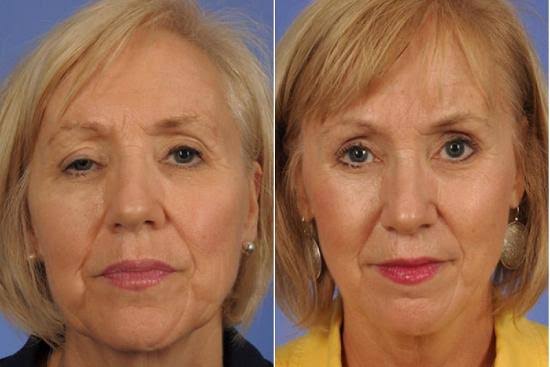Sagging upper eyelids can be a cosmetic concern that makes you look older and
tired. It may also fall into the visual field, partially obscuring your vision. If you are
bothered by this problem, you may want to get medical treatment. The good news is
that there are several treatment options for sagging eyelids. Read on to learn about
some of the most common treatments available. Here are the benefits of surgery
and how it works.
Ptosis
Many people suffer from ptosis sagging eyelids because of age, but it can also be
caused by a medical condition. Your ophthalmologist will diagnose your condition
based on your medical history and a comprehensive eye exam. He may refer you to
an oculoplastic surgeon, a doctor with specialized training in plastic surgery for the
eye. Your ophthalmologist will assess your eyelids and tell you whether you need
surgery to treat ptosis.
Although ptosis sagging eyelid symptoms are typically not noticeable and may not
affect your vision, the drooping of the eyelids can significantly affect your
psychological well-being. The eyelids may cover enough of the eye to impair vision,
causing you to raise your eyebrow to compensate for the visual obstruction. In
some cases, the droopy eyelid can cause problems with breathing, facial muscles,
or vision.
Ectropion
Treatment for ectropion and sagging eyelids may include surgery to tighten skin
around the eye. The surgery can be performed under a local anesthetic or a mild
sedative. It can correct aging eyelids and repair scar tissue. If the problem is
severe, a second procedure may be necessary to remove significant scar tissue or
remove the stitches. Ectropion can cause vision problems, so surgery can resolve
the problem.
A doctor may recommend surgery to repair the ectropion. This surgery will tighten
the ligament connecting the eyelid to the skull. This procedure is best performed
when the condition is early. Left untreated, ectropion can lead to an eye infection or
corneal ulcer, which may interfere with vision. Another symptom of ectropion is
watering of the eye. There may also be a crusting or mucous discharge.
Inheritance
Regardless of the cause, there are several ways to prevent sagging eyelids. One
method is to modify diet and lifestyle to reduce the risk of epigenetic events that
lead to aging. Avoiding long exposure to sunlight, smoking, and eating a healthy
diet are obvious methods to prevent sagging eyelids. Besides these lifestyle
modifications, a patient can also apply topical agents that improve skin thickness
and reduce oxidative damage.
Genetic studies can help identify people at risk for eyelid sagging. Aside from
avoiding sun exposure, it is important to maintain a healthy weight. Genetics can
also play a role in determining the amount of collagen and elastin in the skin. The
most important thing to remember is that your genes play an important role in
determining the type of eyelid you have. If you don’t have any parents with sagging
eyelids, you shouldn’t worry about it.
Surgery
If you are unhappy with the way your eyelids look, you may want to consi der
surgery. This cosmetic procedure can help you achieve a refreshed and youthful
look. Eyelid surgery can remove loose skin and excess fat tissue. It can also
tighten eyelid muscles. After the surgery, the incisions are closed with stitches. The
surgery typically takes about one hour. Typically, you will have one eyelid surgery,
which may be performed as an outpatient procedure at a surgery center or
surgeon’s office.
The recovery period after eyelid surgery is generally short. You will spend some
time in the recovery room, and your doctor will monitor your recovery. After
surgery, you will need to apply ice packs to your eyes for at least ten minutes every
hour, four to five times daily. You should also take prescribed pain medications to
help you recover. You should sleep with your head slightly raised above your chest
for the first few days, and use sunglasses that are dark in color to protect the
eyelids.
Dermal fillers
The best dermal fillers for sagging eyelids are easy to use and should deliver
reproducible cosmetic results. They should also stay in the dermis for a significant
amount of time and have a high safety profile. Patients may experience a slight
burning or stinging sensation, but this will resolve quickly. The treatment will cost
approximately PS2,500. It is possible to have a single treatment every few months
or once a year, depending on your needs.
As you age, the skin around your eyes tends to lose its elasticity and droops. This
extra skin is often responsible for wrinkling and bags under the eyes. Dermal fillers
can address these problems and make the eyelids and surrounding areas look
younger. Dr. Rand Rodgers can restore the appearance of your eyelids and the
surrounding area with dermal fillers.
Read Also : Kanye West Hoodie Shop
Injectables
Sagging eyelids and lines are two of the most common cosmetic concerns as
people age. Injectables have become the primary way to deal with these signs of
aging. However, you may wonder whether injectables can solve your problem. Here
are some benefits and risks of this procedure. Read on to learn more. Sagging
eyelid injectables are temporary, so you can see results after just a few sessions.
Surgical solutions are another option. Nonsurgical injections of fillers can add
volume to your eyelids. These products are made from hyaluroni c acid and can be
injected into your eyelids to improve their appearance. Sagging eyelids can also be
treated with a filler that is derived from fat harvested from your thighs and belly.
Restylane and Belotero are the two best injectables for eyelid lifts.



